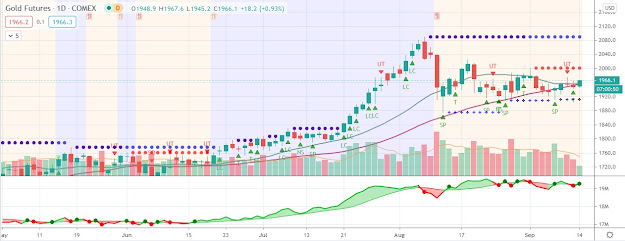One key reason that the gold price maintained its gains
 The gold price, at $1,620 per ounce, opened to the upside Monday morning. Gold prices traded higher amid weakness in the U.S. dollar, which came on the back of news out of Europe that policy makers may complete a new budgetary legal framework by the end of the month. The euro climbed to 1.275 against the U.S. dollar. S&P 500 stock futures rose modestly, gaining 1.80 to 1276. Commodities traded higher with agricultural products leading the way.
The gold price, at $1,620 per ounce, opened to the upside Monday morning. Gold prices traded higher amid weakness in the U.S. dollar, which came on the back of news out of Europe that policy makers may complete a new budgetary legal framework by the end of the month. The euro climbed to 1.275 against the U.S. dollar. S&P 500 stock futures rose modestly, gaining 1.80 to 1276. Commodities traded higher with agricultural products leading the way.One key reason that the gold price maintained its gains despite the positive reports is that upon closer review, the employment data was not nearly as encouraging as first suggested. While the non-farm payrolls data substantially beat expectations, 42,000 of the jobs added were due to a “seasonal quirk in the courier category,” that is likely to be reversed in next month’s report, according to Morgan Stanley economist David Greenlaw. Furthermore, in just the past year, the civilian population rose by 1.7 million, while the labor force increased by just 274,000, indicating that those not in the labor force rose by 1.4 million. If those individuals were to be counted in the data, the unemployment rate would be above 11%, a level generally consistent with a recession.
Jeremy Friesen, a commodity strategist with Societe Generale, echoed these sentiments in a recent note to clients. ”There have been good data out of the U.S., but ultimately the U.S. can’t decouple from the European crisis. There are going to be enough reasons to be worried about global growth and the financial system in the next quarter or two, and gold should benefit from that.”
The Federal Reserve also appears to be well aware that the U.S. labor market is not rebounding as strongly as the data appears to suggest. Last week’s Fed minutes showed that “Employment at state and local governments declined further, and both long-duration unemployment and the share of workers employed part time for economic reasons remained elevated. Initial claims for unemployment insurance moved down, on net, since early November but were still at a level consistent with only modest employment gains, and indicators of job openings and businesses’ hiring plans were little changed.” Moreover, in its economic outlook, the Fed forecasted that the U.S. unemployment rate “will remain elevated” through 2013.
The Fed minutes went on to note that “a number of (FOMC) members indicated that current and prospective economic conditions could well warrant additional policy accommodation.” While the Fed has yet to officially launch a third round of quantitative easing (QE3), the dovish tone of the latest minutes suggest that a third money printing campaign may not be far away. Based on the performance of the gold price last week, it appears that this development has also not been lost on the gold.



Comments
Post a Comment